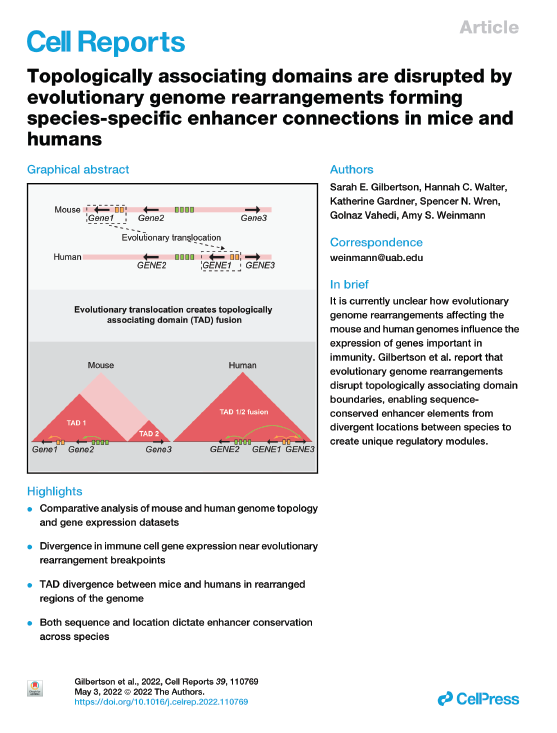Publications

Topologically associating domains are disrupted by evolutionary genome rearrangements forming species-specific enhancer connections in mice and humans
Gilbertson SE, Walter HC, Gardner K, Wren SN, Vahedi G, Weinmann AS.
Cell Reports
2022
Distinguishing between conserved and divergent regulatory mechanisms is essential for translating preclinical research from mice to humans, yet there is a lack of information about how evolutionary genome rearrangements affect the regulation of the immune response, a rapidly evolving system. The current model is topologically associating domains (TADs) are conserved between species, buffering evolutionary rearrangements and conserving long-range interactions within a TAD. However, we find that TADs frequently span evolutionary translocation and inversion breakpoints near genes with species-specific expression in immune cells, creating unique enhancer-promoter interactions exclusive to the mouse or human genomes. This includes TADs encompassing immune-related transcription factors, cytokines, and receptors. For example, we uncover an evolutionary rearrangement that created a shared LPS-inducible regulatory module between OASL and P2RX7 in human macrophages that is absent in mice. Therefore, evolutionary genome rearrangements disrupt TAD boundaries, enabling sequence-conserved enhancer elements from divergent genomic locations between species to create unique regulatory modules.